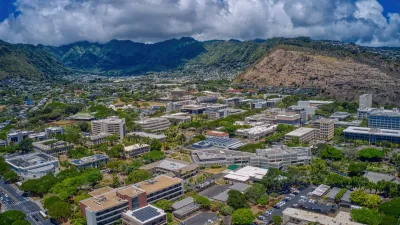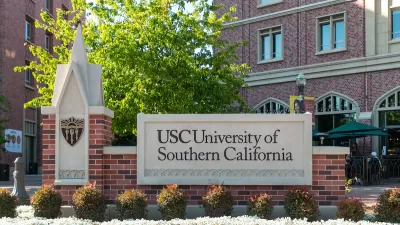Land grant universities are, by design, tasked with benefitting the communities in which they are located. The recent track record on that mission is mixed, according to a recent book on the subject.

Stephen M. Gavazzi, co-author of the book Land-Grant Universities for the Future: Higher Education for the Public Good, writes an article to describe the strengths, weaknesses, opportunities, and threats of land grant universities in the current day.
Land grant universities are the result of a law signed in 1862 by President Abraham Lincoln, who "granted federal land to states to support the development of America's first public universities."
"Land-grant institutions that were created include such prominent ones as Cornell, Maryland, Michigan State, MIT, Ohio State, Penn State, Rutgers, Texas A&M, West Virginia University, Wisconsin and the University of California -- four dozen of America's largest and best public universities. Add to this historically black colleges and universities and tribal colleges, and the total comes to more than 110 institutions."
According to Gavazzi, land grant universities have a mixed record in recent years with regard with their specific aim to serve their communities. Some universities are guilty of a "mission drift," to use Gavazzi's term, away from community-serving work, which has resulted in less public support for higher education.
There are other newer initiatives that "seem to be bringing communities back into the viewfinders of many land-grant and other public universities."
"One sterling example is the Innovation and Economic Prosperity Universities Program, hosted by the Association of Public and Land-grant Universities. This initiative assists universities in documenting and amplifying their ability to support economic and community development through meaningful, ongoing campus-community partnerships," according to Gavazzi.
FULL STORY: How Land-Grant Universities Can Enrich the Future of Communities

Alabama: Trump Terminates Settlements for Black Communities Harmed By Raw Sewage
Trump deemed the landmark civil rights agreement “illegal DEI and environmental justice policy.”

Planetizen Federal Action Tracker
A weekly monitor of how Trump’s orders and actions are impacting planners and planning in America.

Why Should We Subsidize Public Transportation?
Many public transit agencies face financial stress due to rising costs, declining fare revenue, and declining subsidies. Transit advocates must provide a strong business case for increasing public transit funding.

Understanding Road Diets
An explainer from Momentum highlights the advantages of reducing vehicle lanes in favor of more bike, transit, and pedestrian infrastructure.

New California Law Regulates Warehouse Pollution
A new law tightens building and emissions regulations for large distribution warehouses to mitigate air pollution and traffic in surrounding communities.

Phoenix Announces Opening Date for Light Rail Extension
The South Central extension will connect South Phoenix to downtown and other major hubs starting on June 7.
Urban Design for Planners 1: Software Tools
This six-course series explores essential urban design concepts using open source software and equips planners with the tools they need to participate fully in the urban design process.
Planning for Universal Design
Learn the tools for implementing Universal Design in planning regulations.
Caltrans
Smith Gee Studio
Institute for Housing and Urban Development Studies (IHS)
City of Grandview
Harvard GSD Executive Education
Toledo-Lucas County Plan Commissions
Salt Lake City
NYU Wagner Graduate School of Public Service





























